Between Big Sur and Monterey Peninsula lies one of my favorite places in California, Point Lobos State Natural Reserve. It is an important marine preserve and wildlife sanctuary.
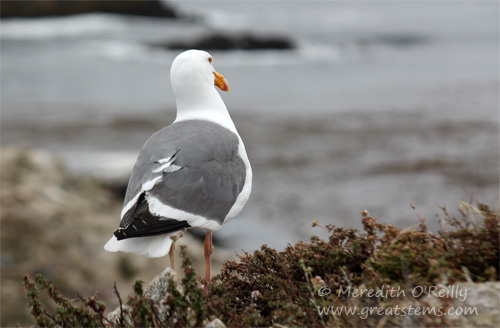
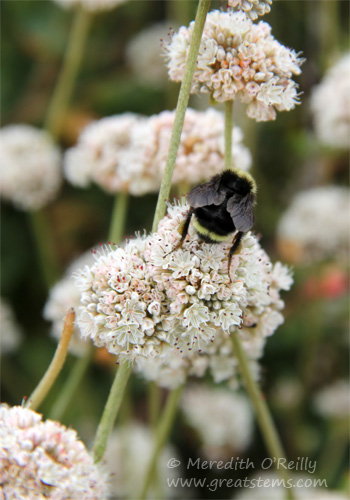
Bumblebee on Sea-cliff Buckwheat, Erigonum parvifolium
To me, it’s one of the most beautiful places on Earth, rich in wildlife and diversity.
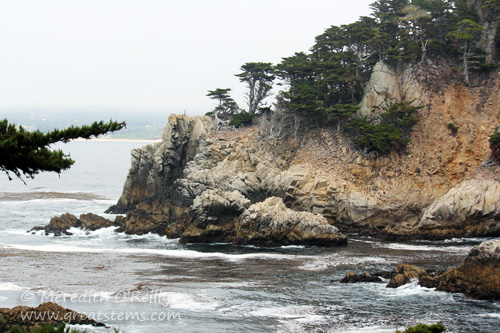
When the skies are clear, the waters are a gorgeous blue, sometimes with shades of turquoise, creating a colorful contrast to the jagged cliffs and enormous rock islands. Of course, fog, wind, and overcast skies, prevalent for the bulk of our vacation, continued for our Point Lobos stop, but it was still beautiful.
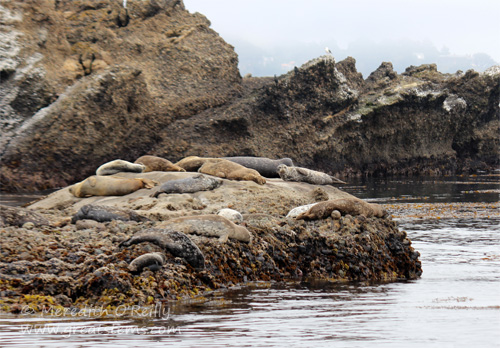
From rocky vantage points, visitors can sometimes catch glimpses of sea otters and migrating whales. A particularly popular spot is Sea Lion Point, where coves serve as warm low-tide haul-out spots for harbor seals. 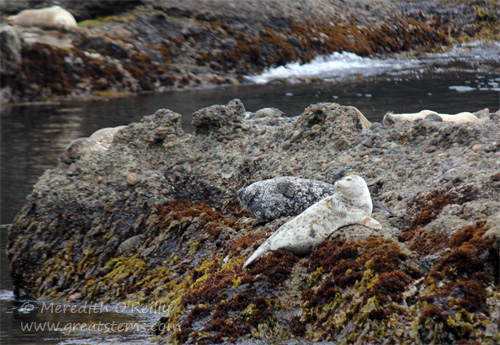
Harbor seals maneuver rather awkwardly on land. They come to these basking rocks as the water recedes at low tide. While the seals might rest for long periods of time, they are still cautious, checking regularly for signs of danger. Also, harbor seals don’t usually touch each other while they are basking on shore. This is different from sea lions, which typically cluster together for a nice cozy sleep.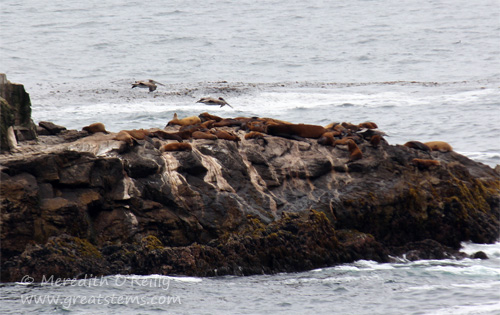
Offshore are the Sea Lion Rocks, basking spots for large groups of Stellar Sea Lions. This rock was a smaller haul-out spot — many more sea lions rested on a larger rock beyond.

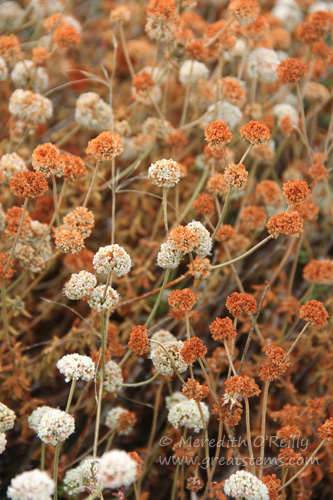
Cliff Buckwheat, Eriogonum parvifolium, endemic to California
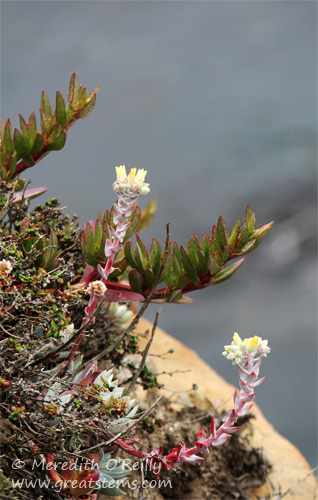
The reserve sadly is not free of difficulties from invasive plants. Coastal stone crops, for example, have to duke it out with invasive ice plants. Mustard, French Broom, and Poison Hemlock have found their way there, too. 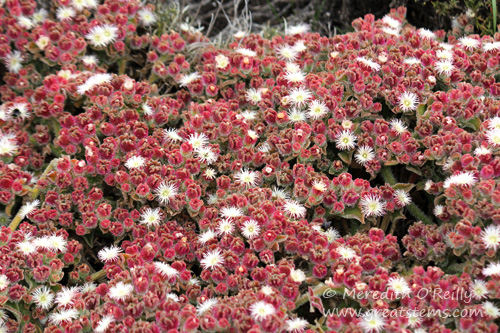
This Crystalline Ice Plant is another invasive plant, drat it. Per the California Invasive Council website, “Crystalline iceplant inhibits the growth of native plants by accumulating salt in the soil and by leaving behind mats of dry plant matter that may take several years to decompose.” What a shame that such a pretty plant is wreaking such havoc.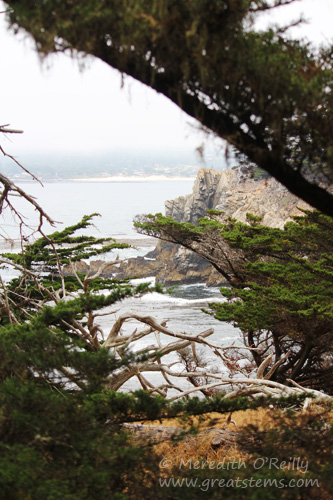
To speak instead of native plants, Point Lobos is one of only two places in the world where Monterey Cypress grows naturally. Many of these beautiful trees can be found along the Cypress Grove trail.
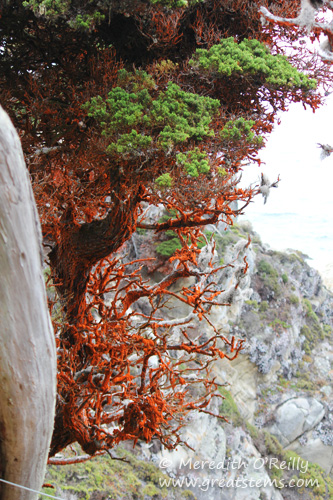
Close to the ocean, however, some of the cypress trees, as well as rocks, are covered in a velvety orange coating. This coating is actually a green algae called Trentepohlia. The algae’s chlorophyll is masked by orange carotenoid pigments, but its purpose is still the same: food production. The algae is not a parasite.
Orange Bush Monkeyflowers line many of the paths, as does the infamous Western Poison Oak.
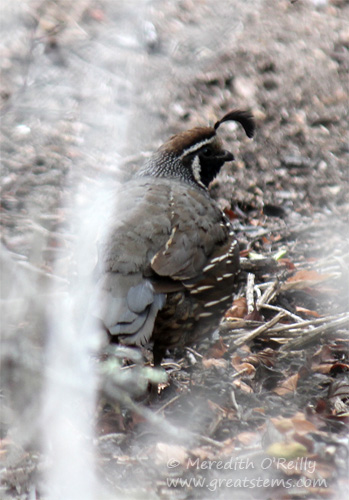
Around a curve at Cypress Grove, we spotted a group of California Quail.They quickly moved out of sight (or at least they thought they were out of sight!).
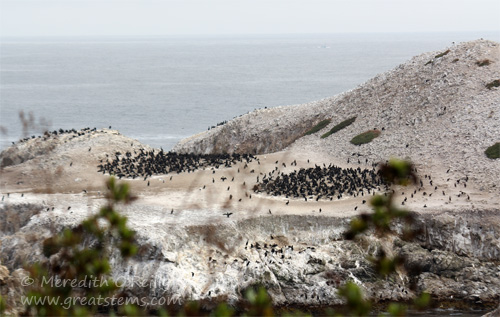 One of my favorite spots at Point Lobos is Bird Island, a summer nesting spot for large colonies of Brandt’s Cormorants and many Western Gulls.
One of my favorite spots at Point Lobos is Bird Island, a summer nesting spot for large colonies of Brandt’s Cormorants and many Western Gulls.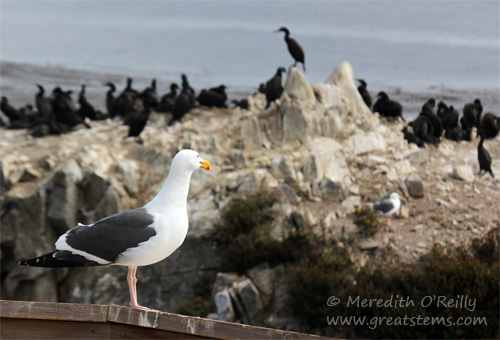
The trail leads you to a nice observation point, though sometimes Western Gulls stake their claim over it.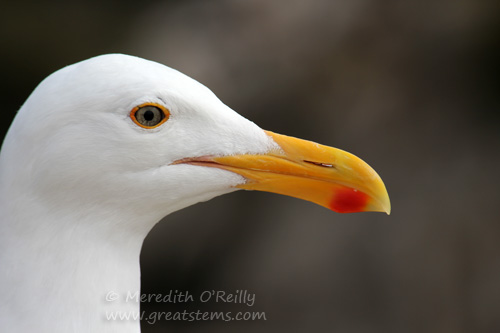
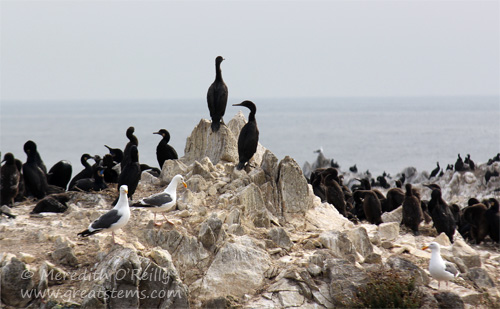
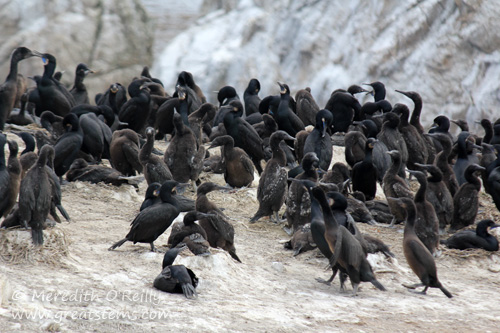 The Cormorants were in various nesting stages while we were there, but most of the juveniles were already as large as the adults. Look closely and you will see the dry circular nests many are sitting on. It’s amusing to see the large juveniles still trying to squeeze in those nests to be pampered by their parents. Also, look at the adult Cormorant in the upper left corner of the photo and you will more clearly see the blue breeding foliage that the adults have.
The Cormorants were in various nesting stages while we were there, but most of the juveniles were already as large as the adults. Look closely and you will see the dry circular nests many are sitting on. It’s amusing to see the large juveniles still trying to squeeze in those nests to be pampered by their parents. Also, look at the adult Cormorant in the upper left corner of the photo and you will more clearly see the blue breeding foliage that the adults have.
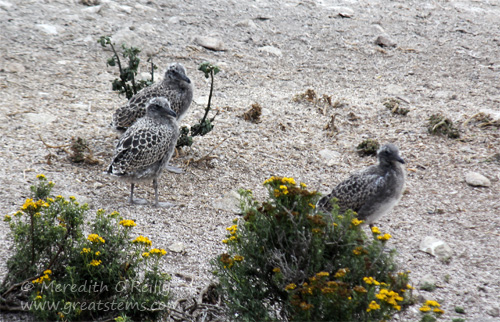 Western Gull juveniles spent time flapping and strengthening their wings, socializing, and pestering their parents for food.
Western Gull juveniles spent time flapping and strengthening their wings, socializing, and pestering their parents for food.
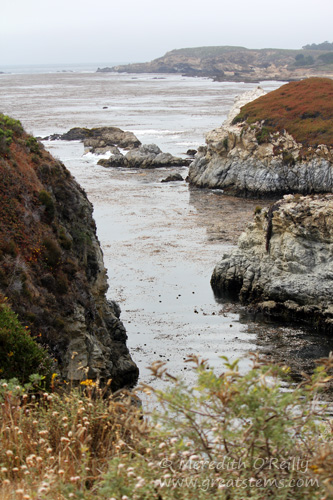
Kelp, plentiful in many of the coves and around rocky outcrops, create nutritionally-rich forests that attract sea otters and other wildlife to the waters of Point Lobos.
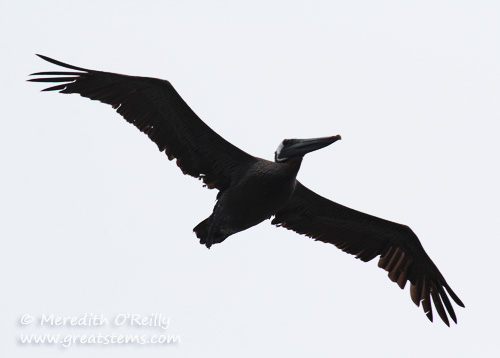
Ever were there Brown Pelicans flying along the coast.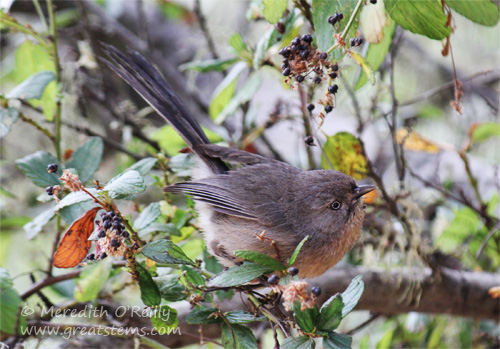 As I walked along the trail, I caught a glimpse of this small bird and managed to get a few pictures. I am undecided whether this is a Wrentit or a female Bushtit. I’m leaning toward the former, but I’d appreciate birder input.
As I walked along the trail, I caught a glimpse of this small bird and managed to get a few pictures. I am undecided whether this is a Wrentit or a female Bushtit. I’m leaning toward the former, but I’d appreciate birder input.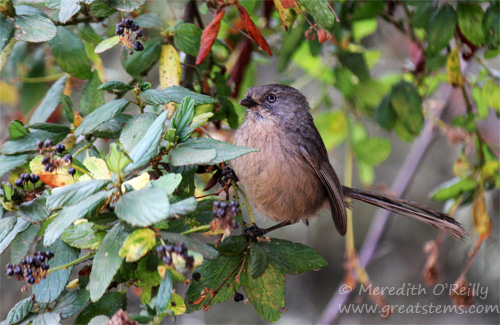
It was hanging out, often upside-down, in a dense berrying shrub and was not in a flock. It might have been eating the plentiful berries, but the shrub was loaded with insects, too. Perhaps both!
Point Lobos is one of those places that feel like home to me, much like the old-growth Redwood forests, the cool Pacific waters, the mountain air of the Rockies, and the starry skies of Big Bend. It’s a sanctuary, a haven, a “great meeting of land and sea,” and a treasure.
From Point Lobos, we headed north to Santa Cruz and San Francisco for brief visits before continuing our journey up Northern California’s beautiful coastline.
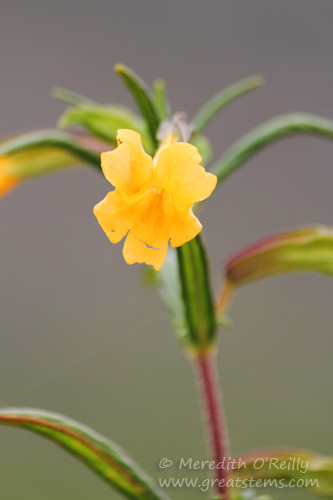
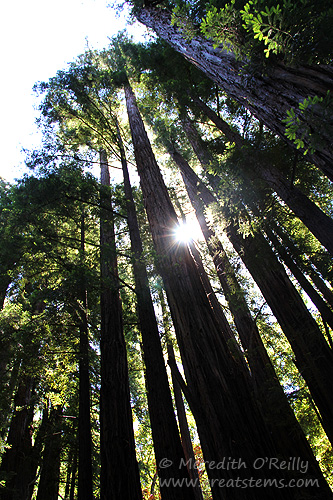
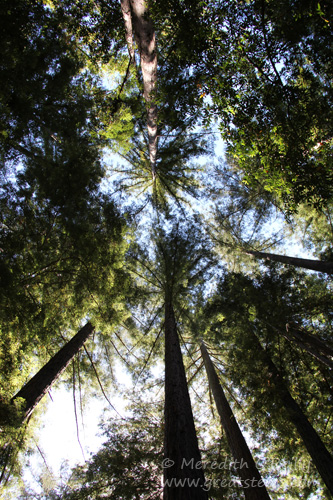
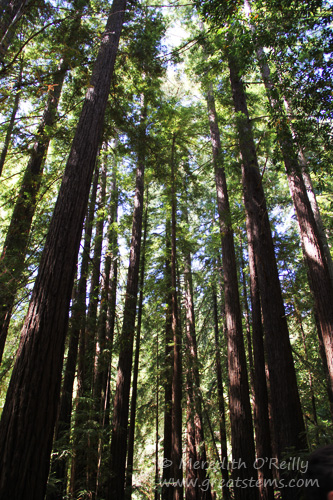
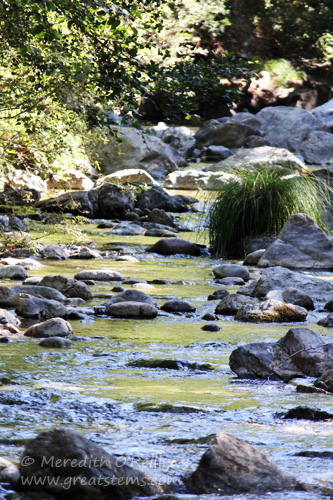
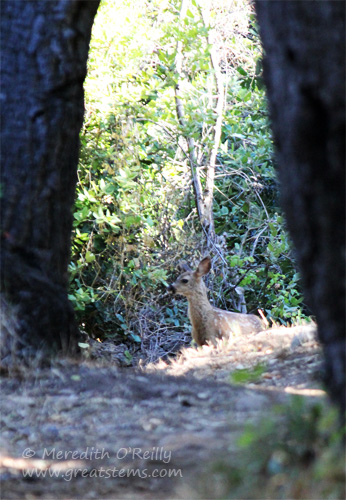
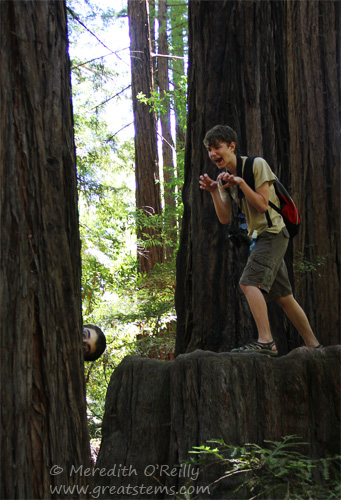 Sometimes we got a little wild ourselves.
Sometimes we got a little wild ourselves.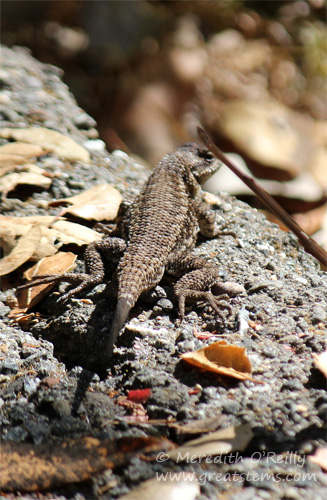
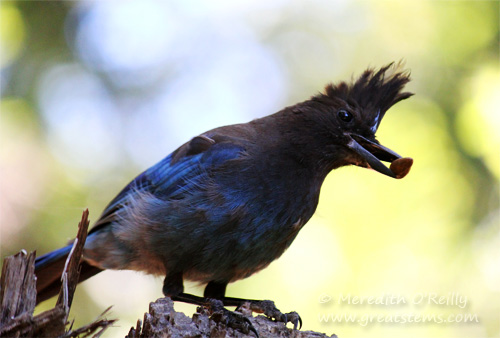
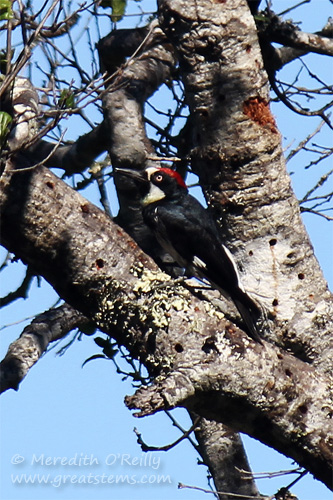 Acorn Woodpeckers are social, busy birds. Their coloration is striking. We also spotted a Northern Flicker and some Downy Woodpeckers during our stay.
Acorn Woodpeckers are social, busy birds. Their coloration is striking. We also spotted a Northern Flicker and some Downy Woodpeckers during our stay.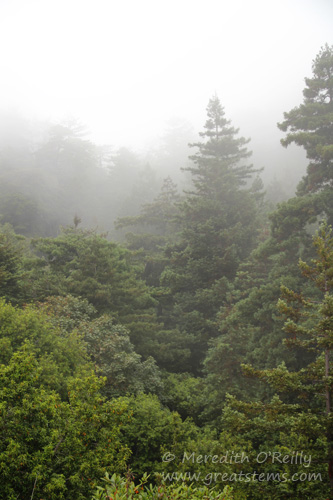 Within the forest, down at the base of the trees, one feels a little sheltered from the fog, but as you drive along the coast, fog can come and go and come right back again quite suddenly. Fog was our friend during our vacation — well, it sure seemed to like us because it visited a lot during our stay.
Within the forest, down at the base of the trees, one feels a little sheltered from the fog, but as you drive along the coast, fog can come and go and come right back again quite suddenly. Fog was our friend during our vacation — well, it sure seemed to like us because it visited a lot during our stay.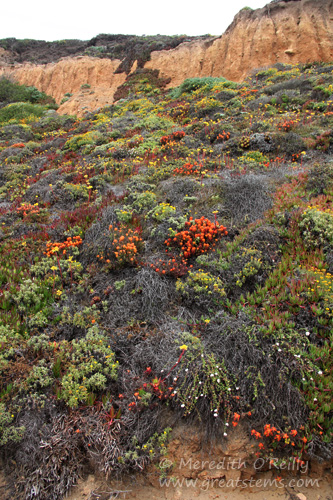 But even the side of the highway is gorgeous. My son snapped this picture of coastal sedums and other plants while we waited for our turn on a one-lane section of Highway 1 that was being repaired.
But even the side of the highway is gorgeous. My son snapped this picture of coastal sedums and other plants while we waited for our turn on a one-lane section of Highway 1 that was being repaired.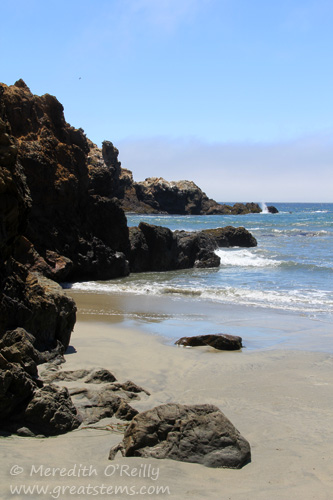 Not too far from Pfeiffer Big Sur State Park is Pfeiffer Beach, one of my favorite coastal spots along the Pacific.
Not too far from Pfeiffer Big Sur State Park is Pfeiffer Beach, one of my favorite coastal spots along the Pacific.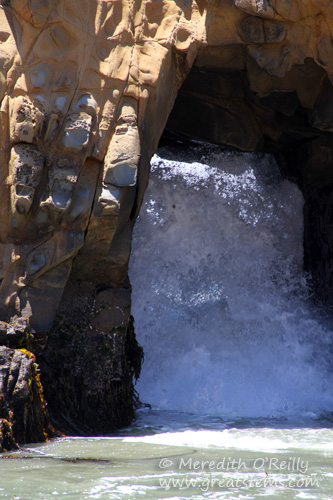
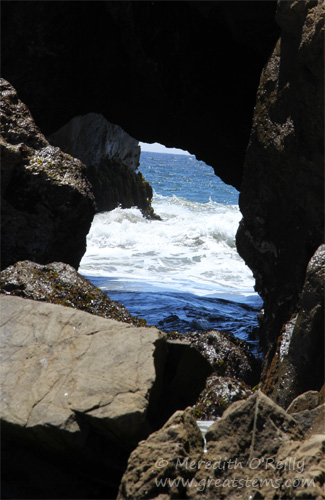 We were there mid-day, and Pfeiffer is gorgeous all day long, but let me tell you that if you really want to see something spectacular, visit Pfeiffer at sunset.
We were there mid-day, and Pfeiffer is gorgeous all day long, but let me tell you that if you really want to see something spectacular, visit Pfeiffer at sunset.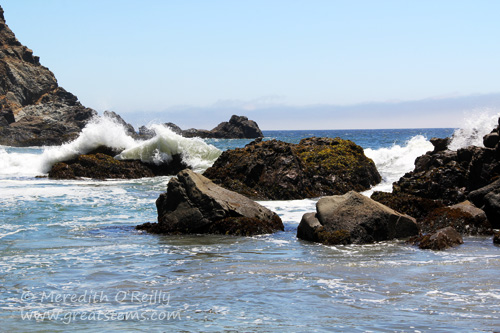
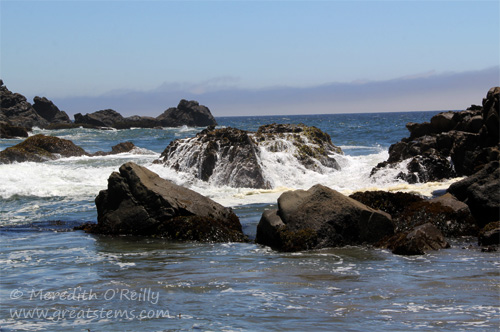
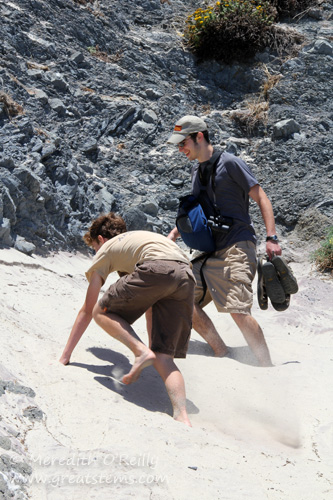
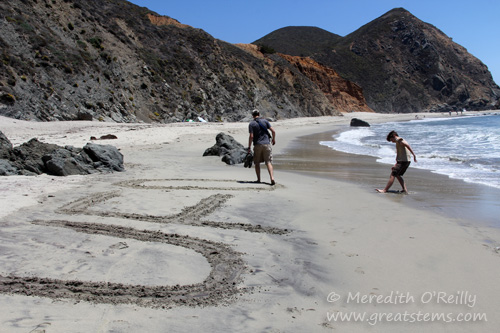
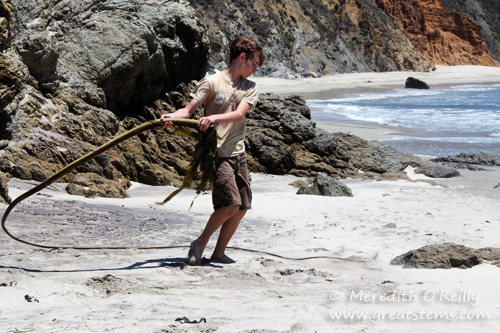 It’s all fun and games until you whip yourself on the butt.
It’s all fun and games until you whip yourself on the butt.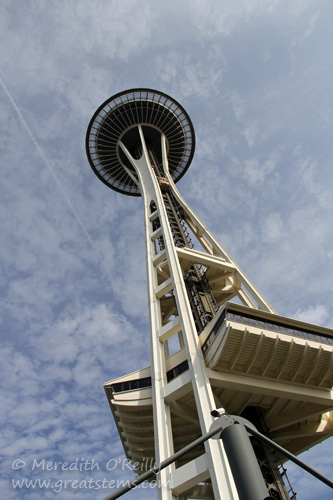
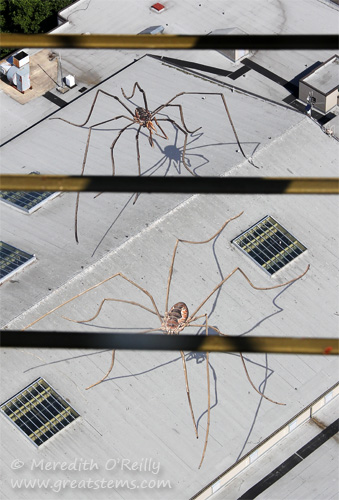
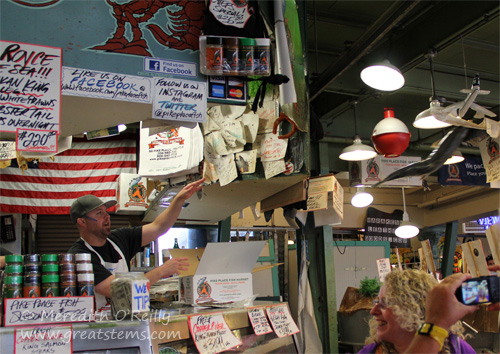
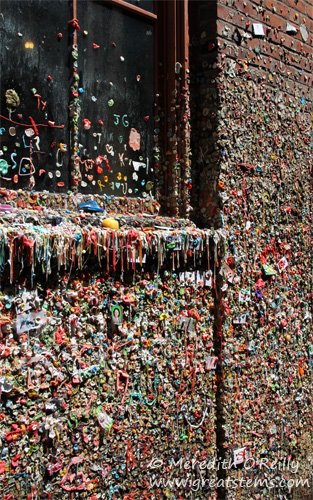
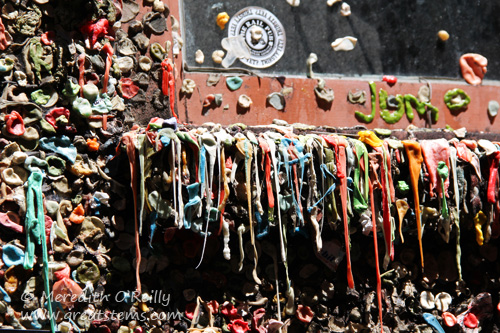
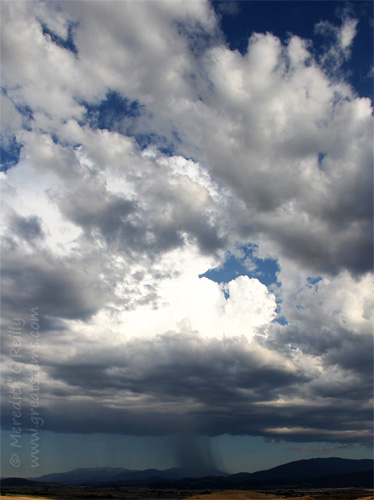
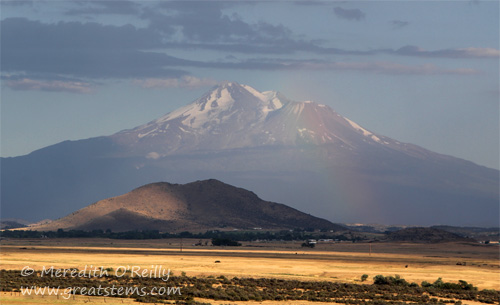
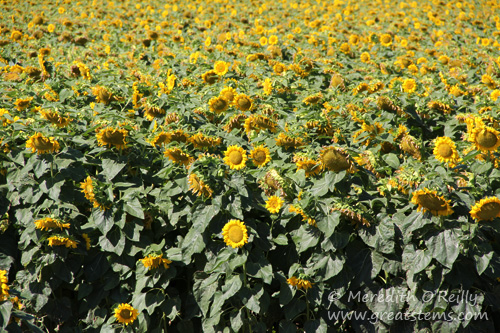
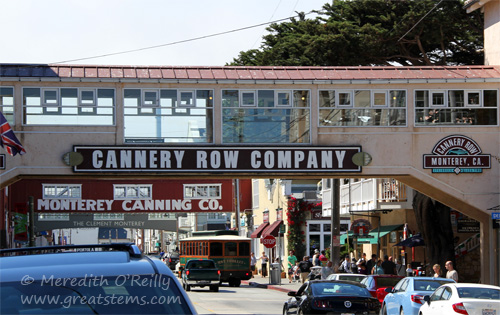 We drove past Stockton, then cut over to the coast, coming out right at Monterrey. We would be camping down at Big Sur, but since we were ahead of schedule we stopped in to enjoy this historic and beautiful town.
We drove past Stockton, then cut over to the coast, coming out right at Monterrey. We would be camping down at Big Sur, but since we were ahead of schedule we stopped in to enjoy this historic and beautiful town.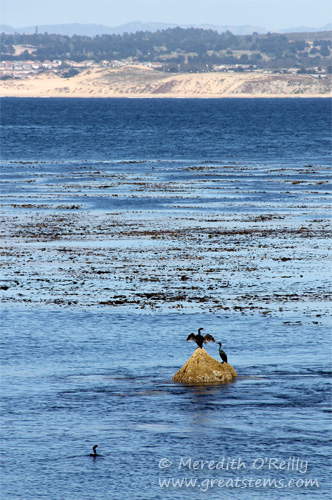 The Monterrey Peninsula is known for its beautiful scenery and wonderful wildlife. The coastal waters are home to harbor seals, sea otters, visiting whales, and many, many birds.
The Monterrey Peninsula is known for its beautiful scenery and wonderful wildlife. The coastal waters are home to harbor seals, sea otters, visiting whales, and many, many birds.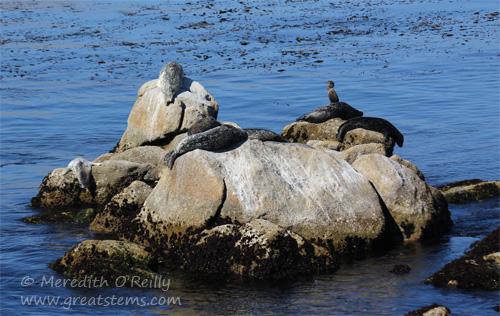 It always amazes me that harbor seals can flop themselves up onto such high rocks.
It always amazes me that harbor seals can flop themselves up onto such high rocks.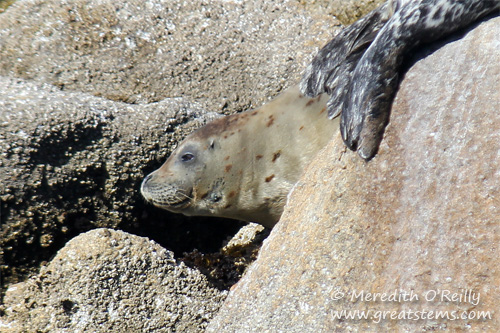 This little one was well camouflaged among the rocks — one had to look closely to see it (compare to photo above).
This little one was well camouflaged among the rocks — one had to look closely to see it (compare to photo above).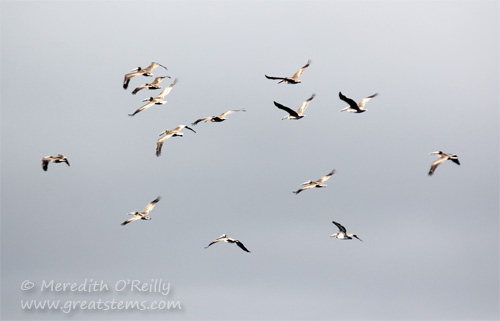 When you are pelican-obsessed like I am, it’s remarkably better to have a digital camera in your hand than a film camera. Brown pelicans always seem to be in migration when I visit California, and I love watching them fly by. Usually they are in a long line as they fly, but this group got a little wild and crazy.
When you are pelican-obsessed like I am, it’s remarkably better to have a digital camera in your hand than a film camera. Brown pelicans always seem to be in migration when I visit California, and I love watching them fly by. Usually they are in a long line as they fly, but this group got a little wild and crazy.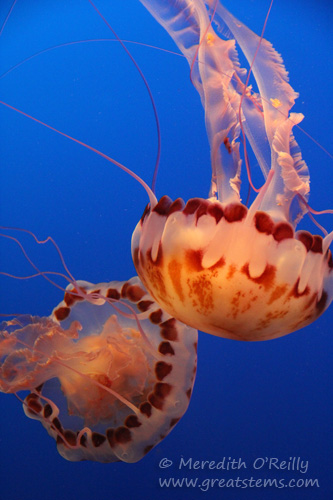 At the Monterrey Bay Aquarium, we oohed and aahed over marine life such as Purple-striped Jellyfish.
At the Monterrey Bay Aquarium, we oohed and aahed over marine life such as Purple-striped Jellyfish.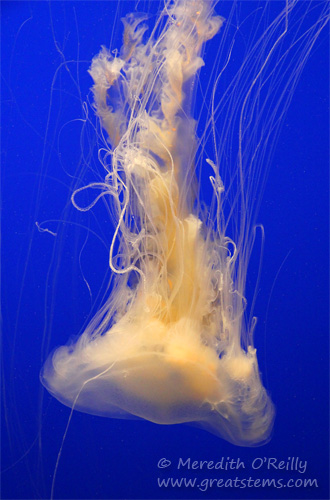 This is an equally beautiful Egg Yolk Jellyfish.
This is an equally beautiful Egg Yolk Jellyfish.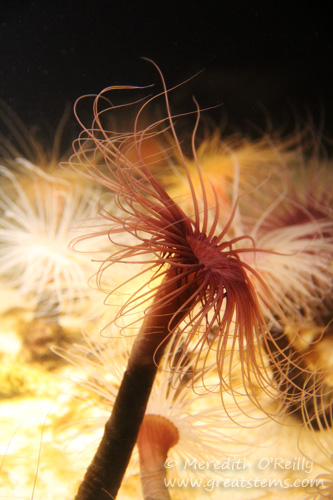 Likewise, a tube anemone. I have to admit, Monterrey Bay Aquarium really is a good one, especially for families.
Likewise, a tube anemone. I have to admit, Monterrey Bay Aquarium really is a good one, especially for families.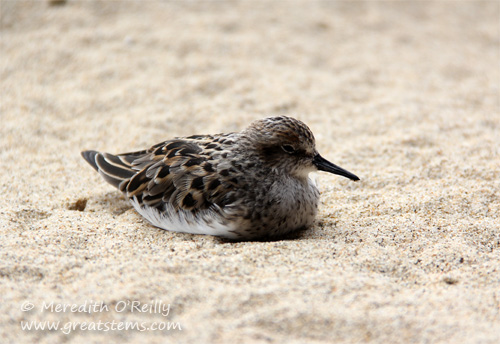
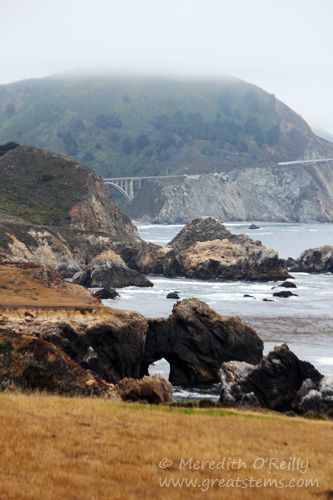 As our true destination was Big Sur, we headed down the beautiful Highway 1. As is always our luck, the fog rolled in just in time for our drive.
As our true destination was Big Sur, we headed down the beautiful Highway 1. As is always our luck, the fog rolled in just in time for our drive.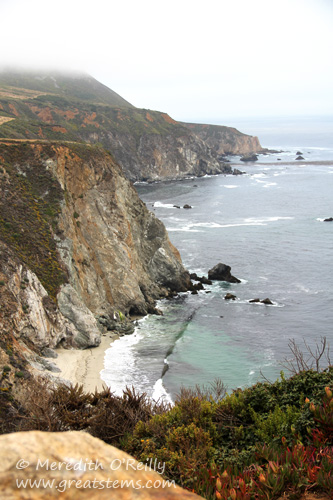
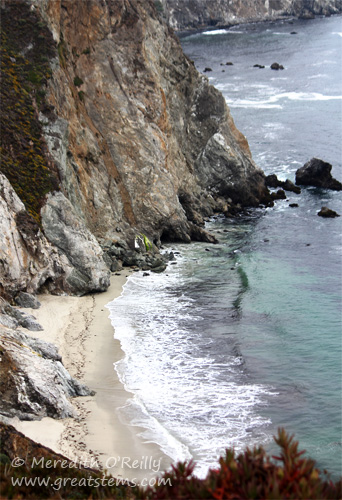
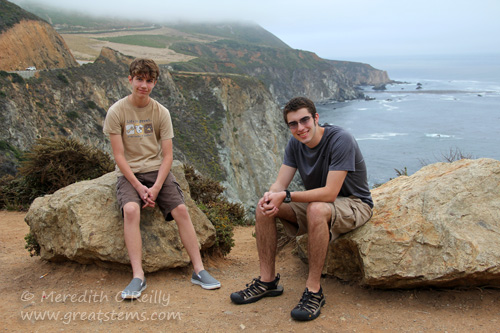 But no worries, we loved it just the same.
But no worries, we loved it just the same.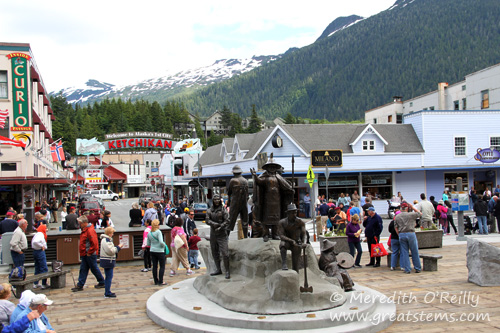
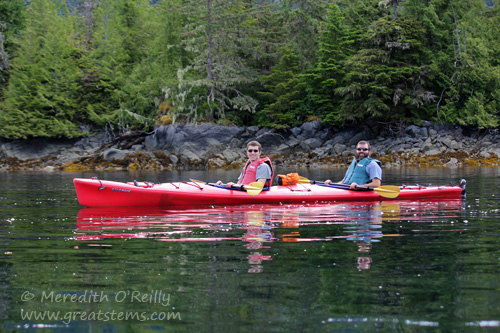
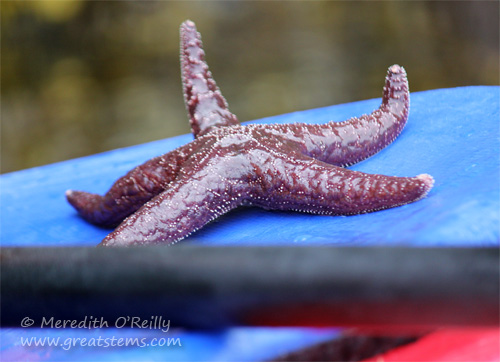 The water was surprisingly clear, too, and that meant we could see sea stars, jellyfish, and other marine life pretty well. Above is a Purple Ochre Sea Star, a keystone species. It helps encourage marine life diversity by controlling populations of the Common Mussel.
The water was surprisingly clear, too, and that meant we could see sea stars, jellyfish, and other marine life pretty well. Above is a Purple Ochre Sea Star, a keystone species. It helps encourage marine life diversity by controlling populations of the Common Mussel.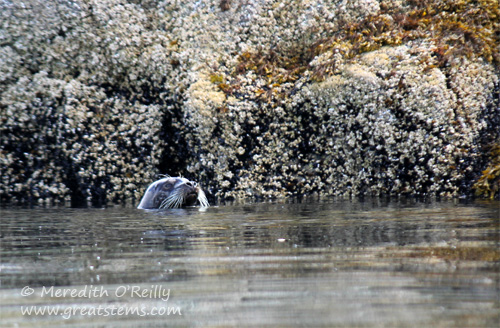
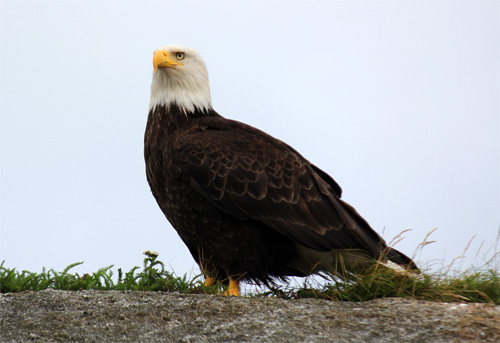 A bald eagle stood watch from a rock near one of the Tatoosh Islands.
A bald eagle stood watch from a rock near one of the Tatoosh Islands.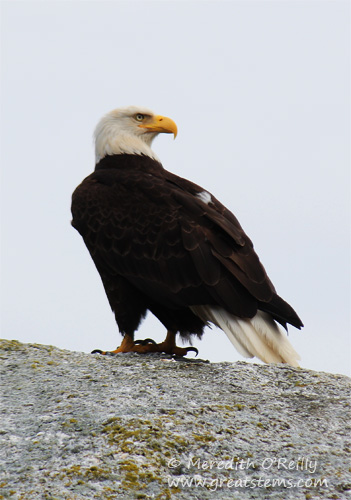 It truly is a majestic bird and quite big — an adult can weigh up to 14 pounds.
It truly is a majestic bird and quite big — an adult can weigh up to 14 pounds. 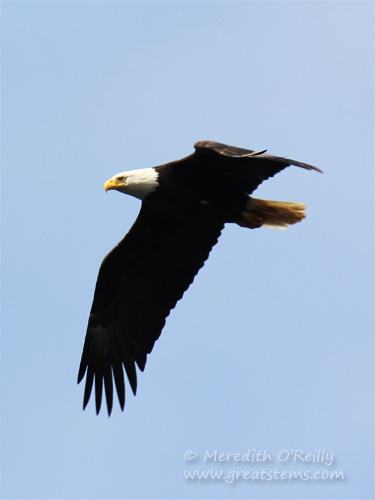 Bald eagles are stubborn birds. If they catch a fish too heavy to fly with, rather than drop it they’ll swim along awkwardly with their wings serving as paddles.
Bald eagles are stubborn birds. If they catch a fish too heavy to fly with, rather than drop it they’ll swim along awkwardly with their wings serving as paddles. 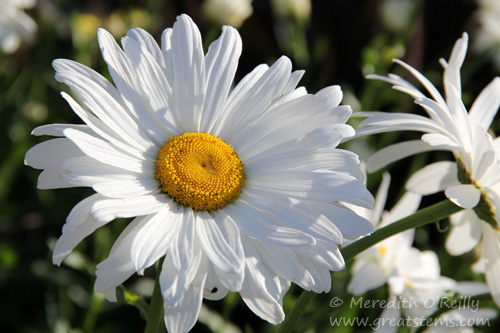 Our final cruise stop was Victoria, British Columbia — a brief visit to Canada. I’d heard how beautiful this city is, but I’ll have to visit another time to truly see it. Our families voted to go look for killer whales, and so it was back to the ocean for us again.
Our final cruise stop was Victoria, British Columbia — a brief visit to Canada. I’d heard how beautiful this city is, but I’ll have to visit another time to truly see it. Our families voted to go look for killer whales, and so it was back to the ocean for us again.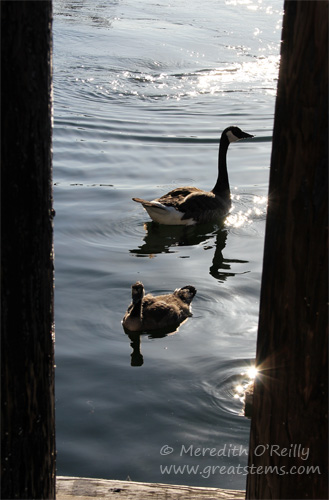
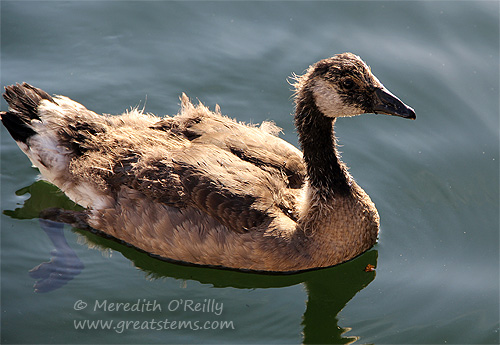 While boarding the tour boat, these Canada Geese swam over for a hello. It was nice getting to see Canada Geese while actually in Canada.
While boarding the tour boat, these Canada Geese swam over for a hello. It was nice getting to see Canada Geese while actually in Canada.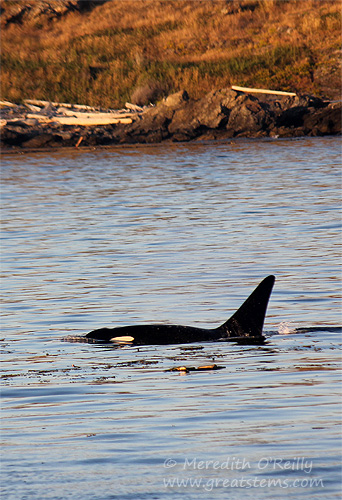
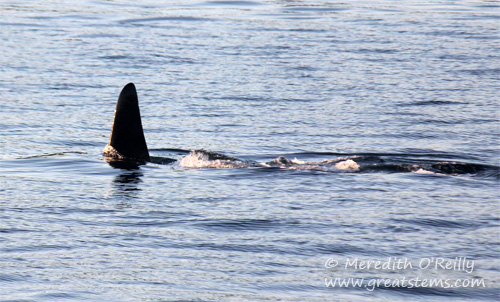 We watched a small family of resident orcas. They were very focused on foraging for fish in the kelp-heavy waters.
We watched a small family of resident orcas. They were very focused on foraging for fish in the kelp-heavy waters.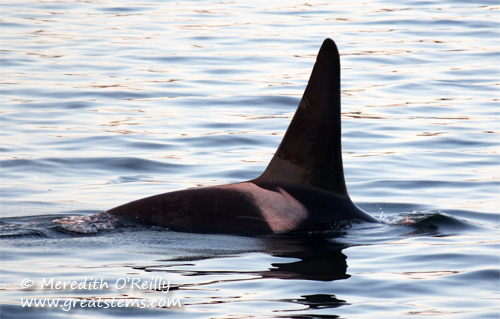 The killer whales were remarkably calm in their approach to getting food — swimming at easy speeds and occasionally curving into a deeper dive.
The killer whales were remarkably calm in their approach to getting food — swimming at easy speeds and occasionally curving into a deeper dive.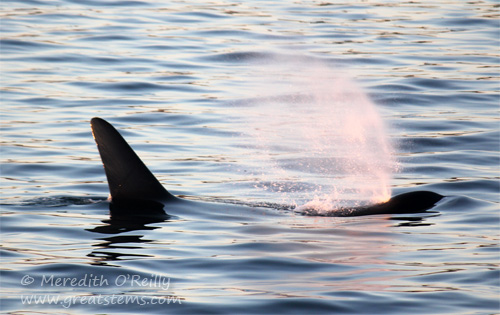
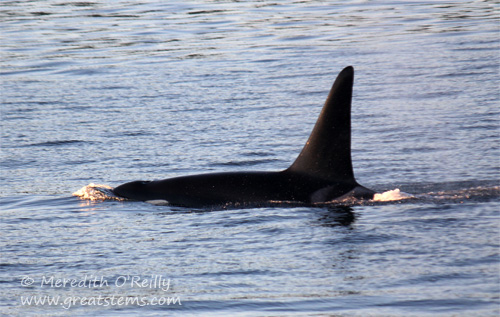 Who would have thought watching killer whales would prove to be a relaxing activity?
Who would have thought watching killer whales would prove to be a relaxing activity?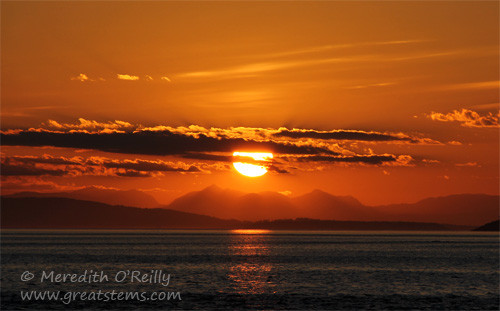
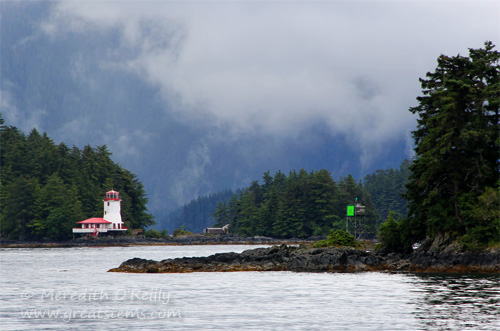
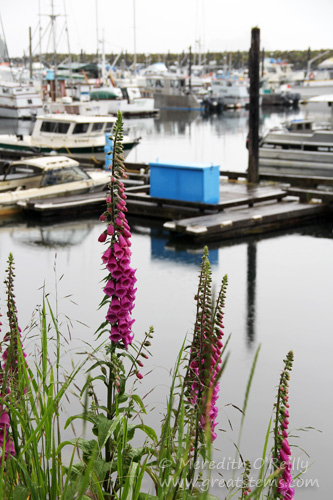
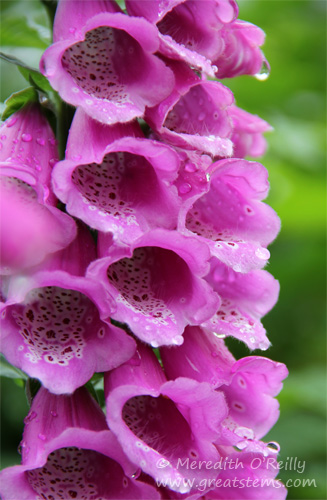
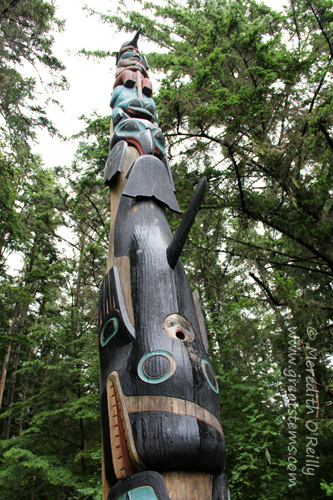
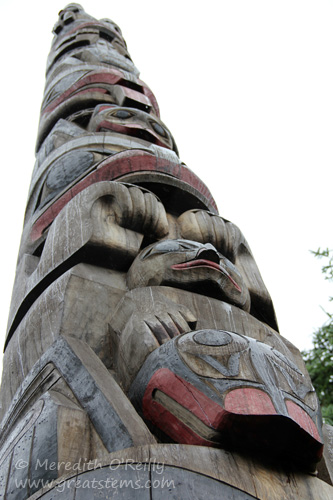
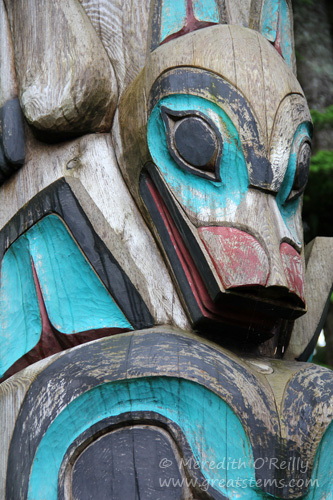
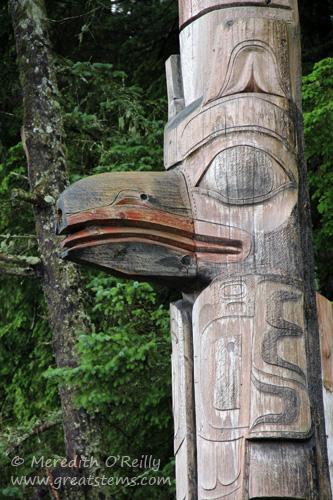
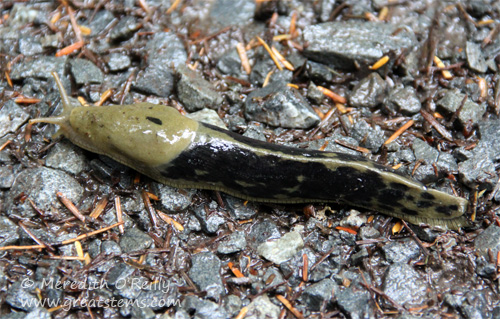 Thanks to the morning rain, large banana slugs found easy passage across the paths. Their slow pace make them pleasant photo subjects. This one was about 6 inches long.
Thanks to the morning rain, large banana slugs found easy passage across the paths. Their slow pace make them pleasant photo subjects. This one was about 6 inches long.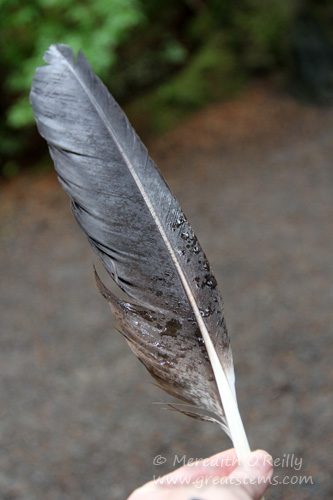
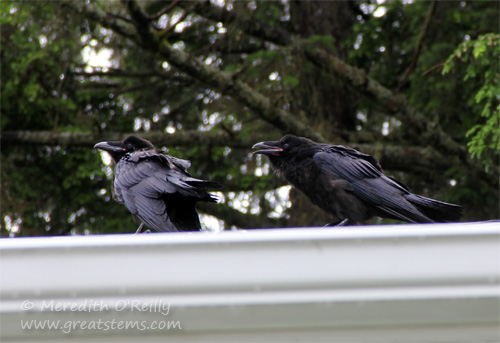
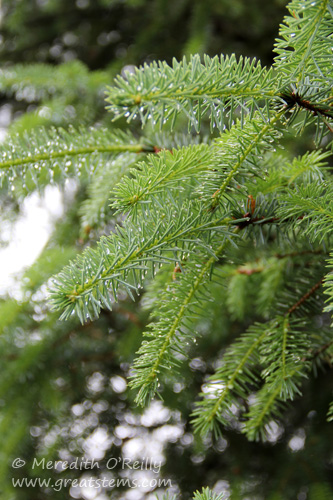
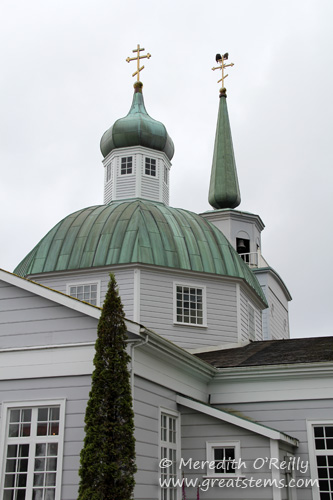
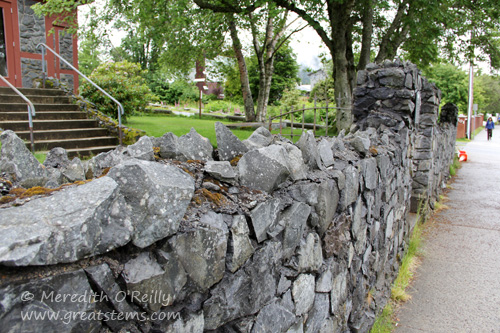
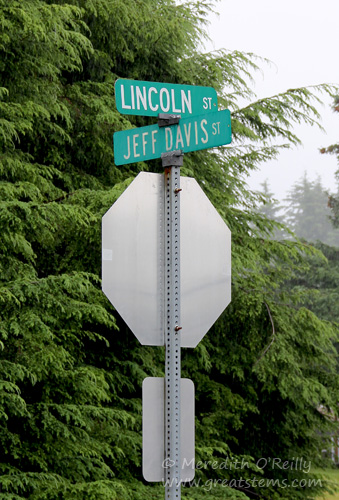
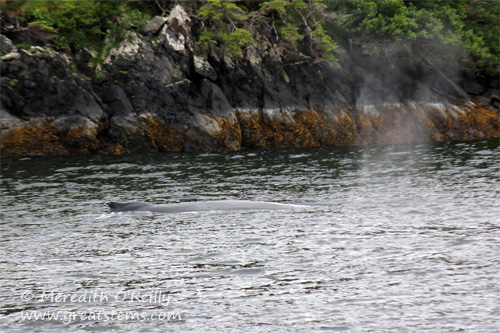 Taking a boat in Sitka Sound, we enjoyed plentiful wildlife, and by this time the rain had ceased completely. Above is a friendly, well-known humpback whale named Domino.
Taking a boat in Sitka Sound, we enjoyed plentiful wildlife, and by this time the rain had ceased completely. Above is a friendly, well-known humpback whale named Domino.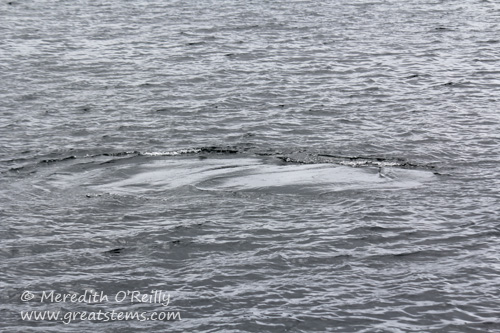 Here’s what is known as a whale footprint, a slick spot that forms as a whale thrusts its fluke up and down underwater.
Here’s what is known as a whale footprint, a slick spot that forms as a whale thrusts its fluke up and down underwater.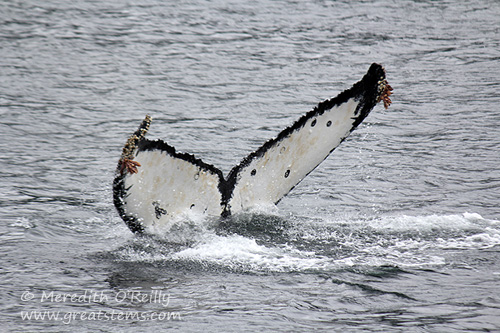 Not only does Domino have distinct black spots on his fluke, the growth of barnacles at the tips is an additional identification mark for this handsome whale.
Not only does Domino have distinct black spots on his fluke, the growth of barnacles at the tips is an additional identification mark for this handsome whale.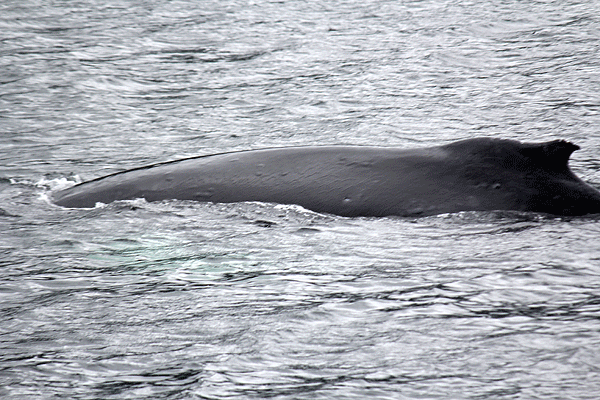
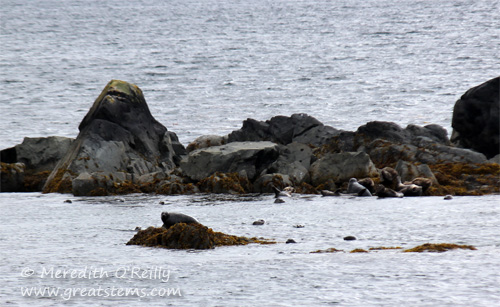 Near these tiny islands, mere rock outcrops, a large group of harbor seals basked, played, and fed.
Near these tiny islands, mere rock outcrops, a large group of harbor seals basked, played, and fed.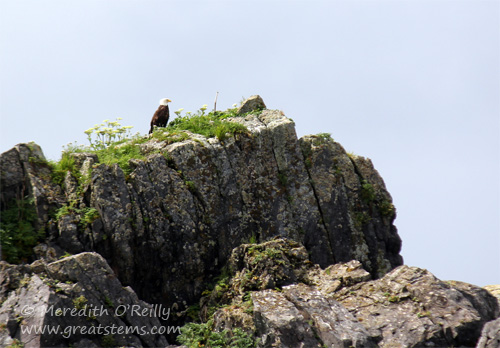
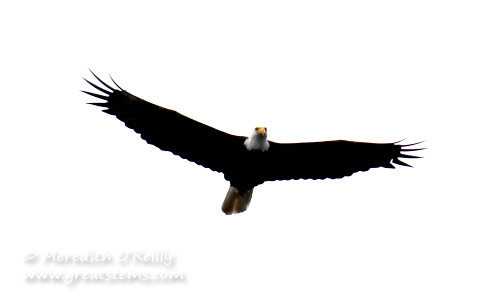
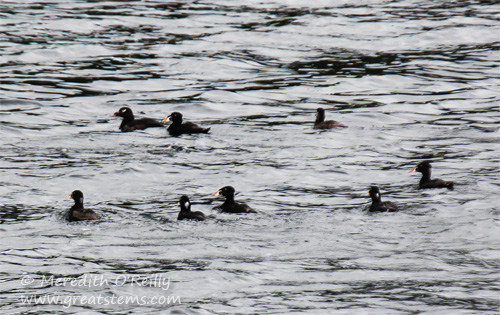
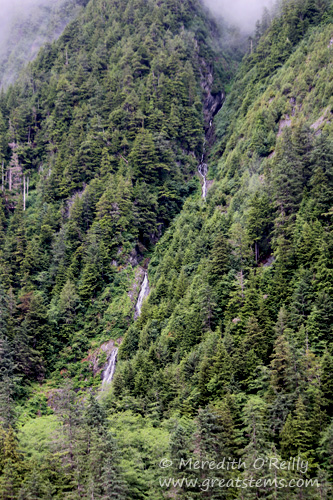
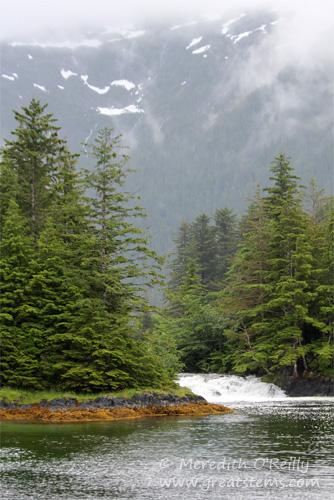
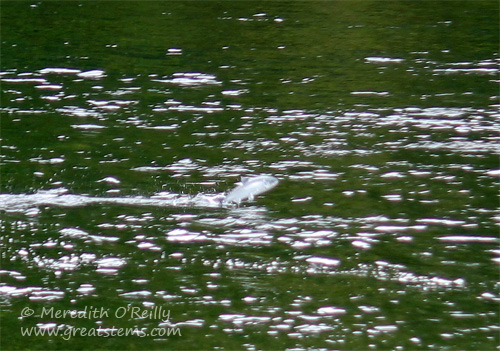
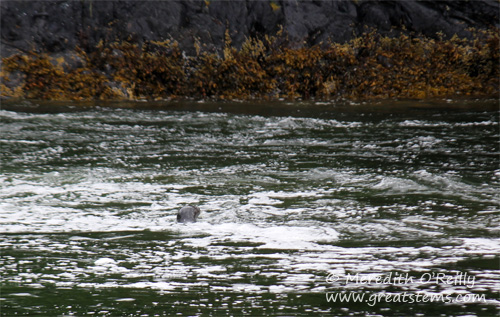
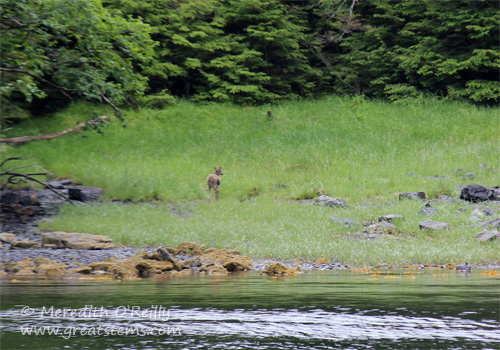
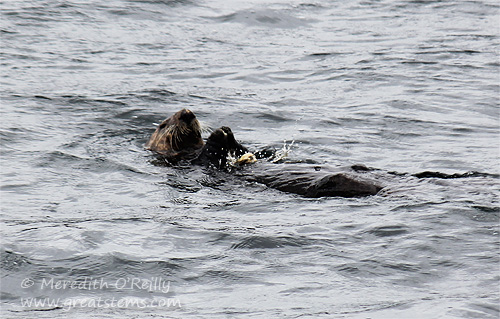 I can probably safely say, however, that despite the large variety of wildlife we saw in Sitka, our family enjoyed the sea otters most of all (though for some reason that harbor seal going after the jumping salmon still stays on my mind).
I can probably safely say, however, that despite the large variety of wildlife we saw in Sitka, our family enjoyed the sea otters most of all (though for some reason that harbor seal going after the jumping salmon still stays on my mind).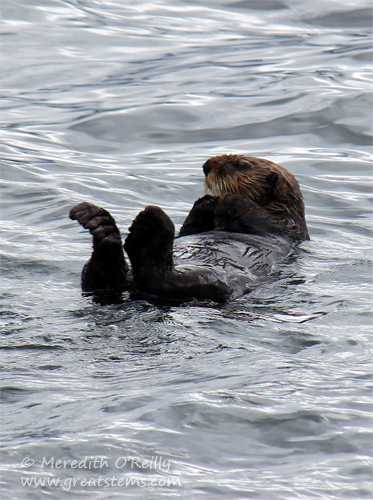
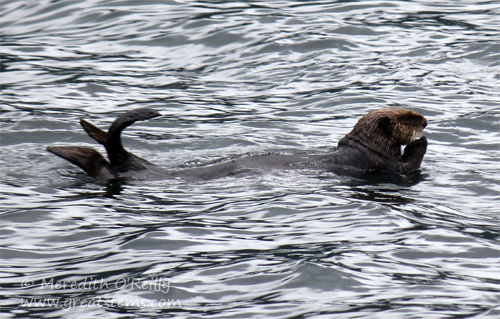 They’d roll and preen and dive and eat, and they’d preen some more.
They’d roll and preen and dive and eat, and they’d preen some more. 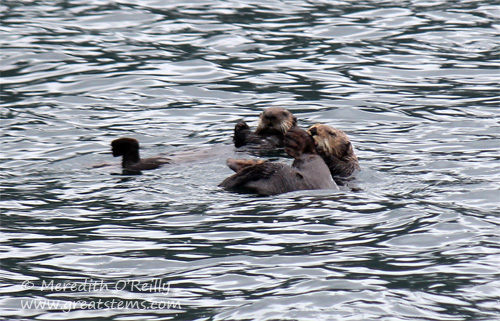 I’m so happy their numbers have been going up — they were hunted almost to extinction by fur traders. Sea otters are still listed as endangered, however. Sea otters are a keynote species, keeping the population of sea urchins and other kelp-eaters under control and thus protecting the habitat that provides shelter and food for so many other marine animals.
I’m so happy their numbers have been going up — they were hunted almost to extinction by fur traders. Sea otters are still listed as endangered, however. Sea otters are a keynote species, keeping the population of sea urchins and other kelp-eaters under control and thus protecting the habitat that provides shelter and food for so many other marine animals.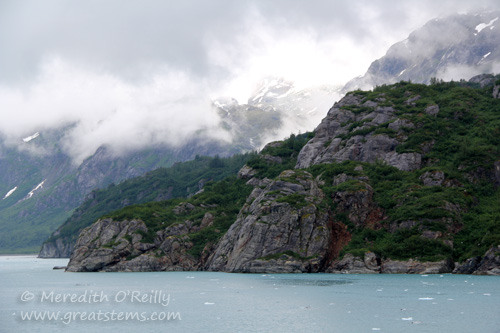
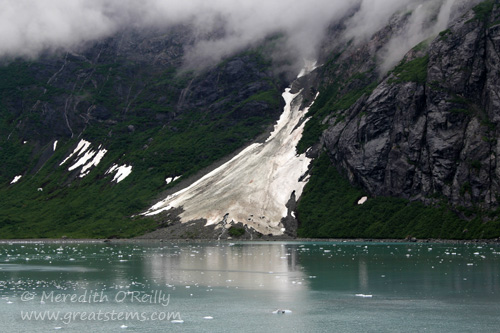

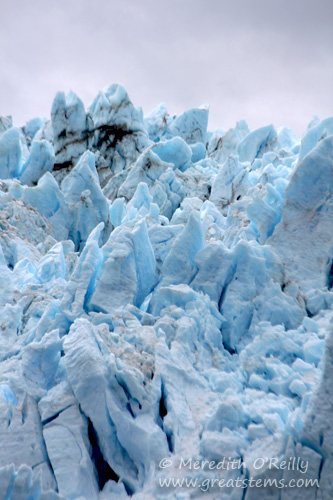
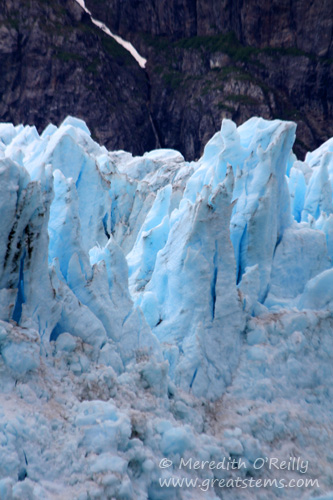
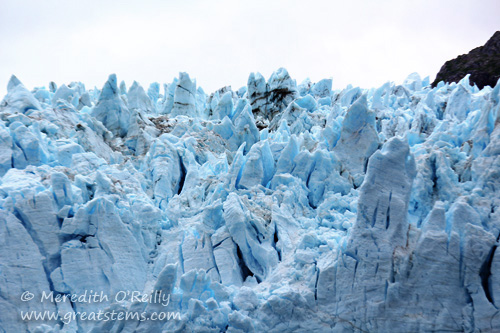
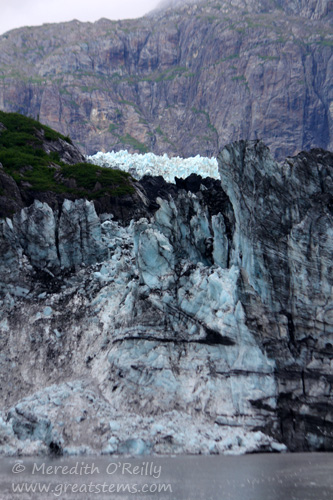
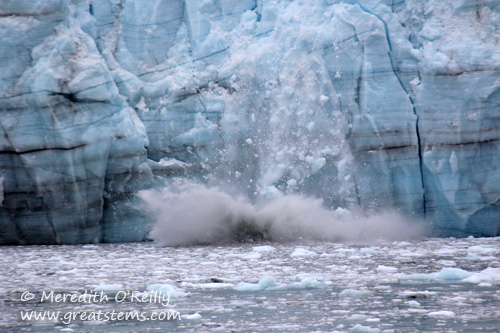 Calving is the sudden breaking away of ice from a glacier, forming icebergs and the like. Margerie Glacier calves actively all year long. Sometimes, falling ice might simply be small chunks, and by that I mean ones the size of Volkswagon Beetles or school buses.
Calving is the sudden breaking away of ice from a glacier, forming icebergs and the like. Margerie Glacier calves actively all year long. Sometimes, falling ice might simply be small chunks, and by that I mean ones the size of Volkswagon Beetles or school buses.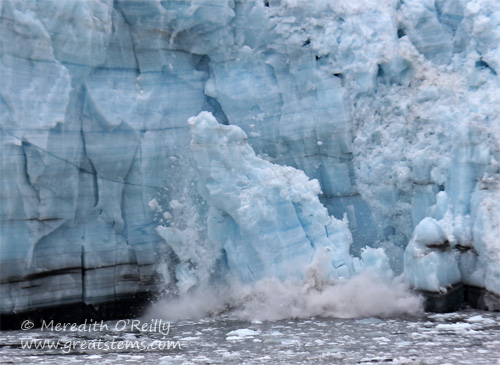
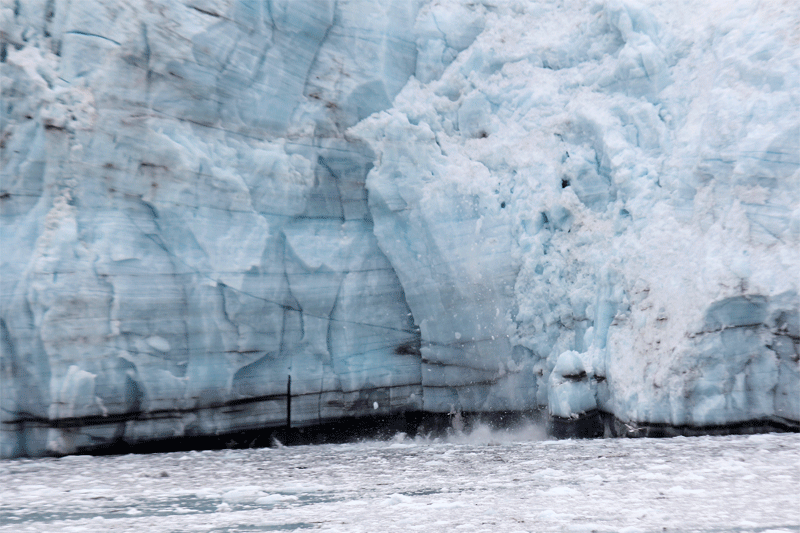
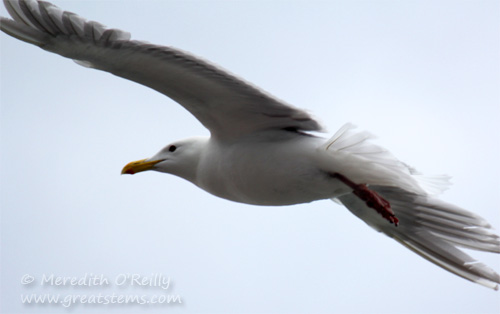
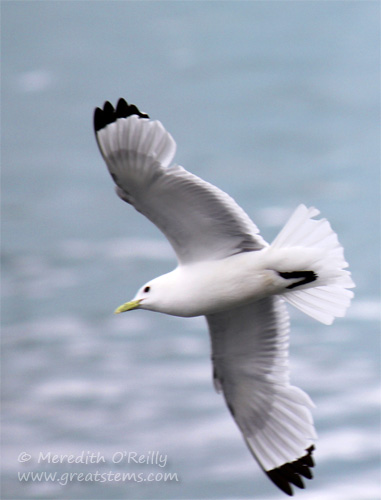
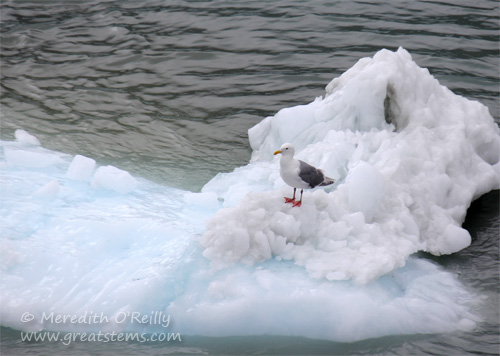
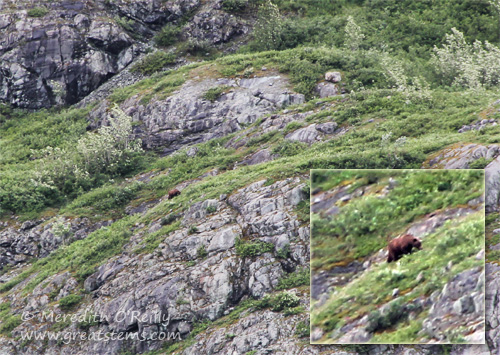 As we headed to other glaciers, we spotted this Grizzly Bear walking up a hill. From the ship, it was a mere dot and almost impossible to see without a zoom lens or binoculars.
As we headed to other glaciers, we spotted this Grizzly Bear walking up a hill. From the ship, it was a mere dot and almost impossible to see without a zoom lens or binoculars.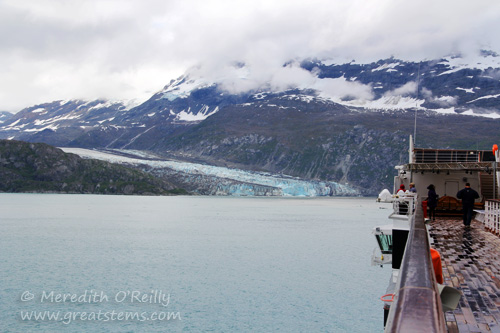 Lamplugh Glacier, 8-miles long and about 3/4-mile wide, is another glacier in the West Arm of the bay.
Lamplugh Glacier, 8-miles long and about 3/4-mile wide, is another glacier in the West Arm of the bay.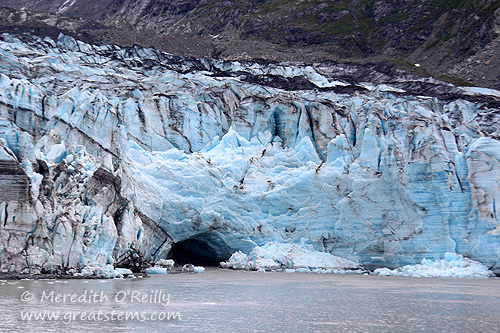
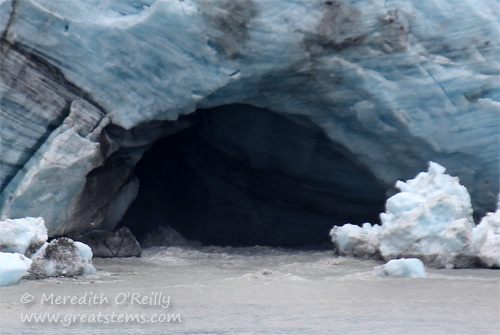
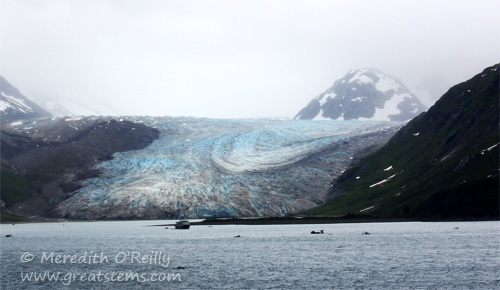
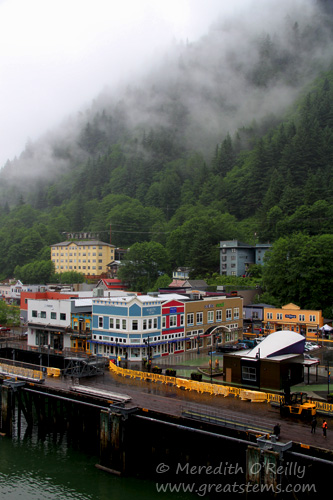
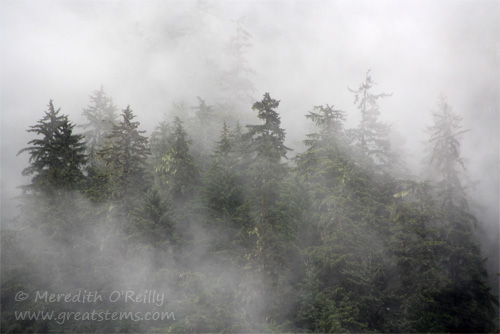 In fact, fog became the norm for our vacation, so much so that it became downright amusing. But that’s to be expected of the Pacific Coast in July.
In fact, fog became the norm for our vacation, so much so that it became downright amusing. But that’s to be expected of the Pacific Coast in July.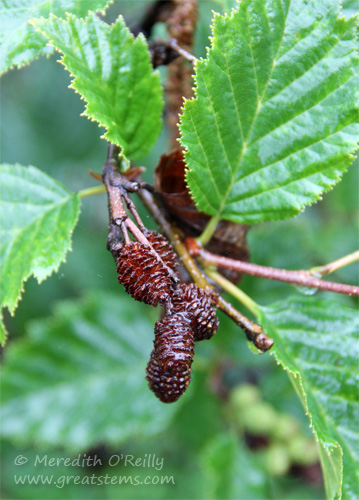
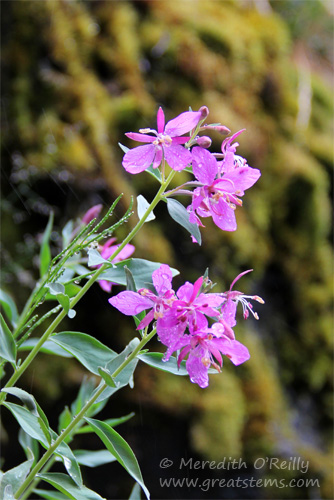
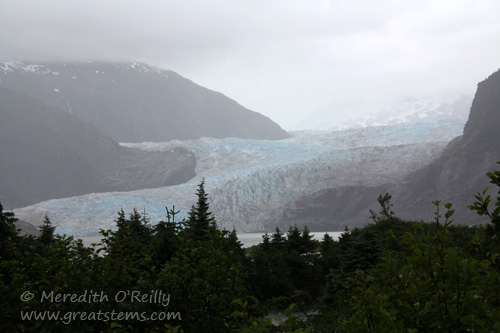
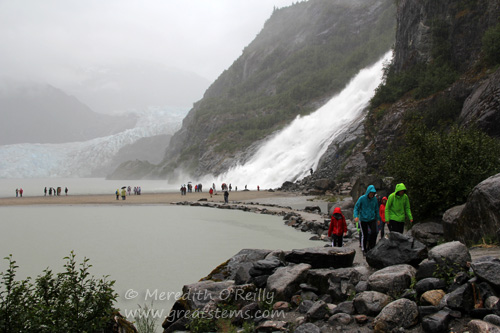
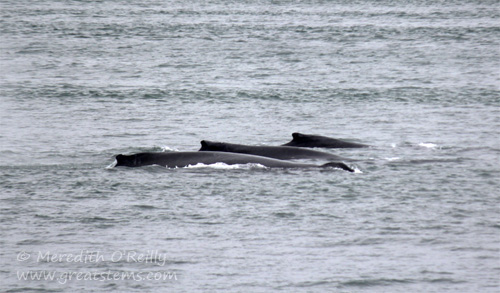 The real cold and wet fun came when we went whale watching in Auke Bay. Several humpback whales were in sight. These three stayed close together, feeding and taking breaths in near sync.
The real cold and wet fun came when we went whale watching in Auke Bay. Several humpback whales were in sight. These three stayed close together, feeding and taking breaths in near sync.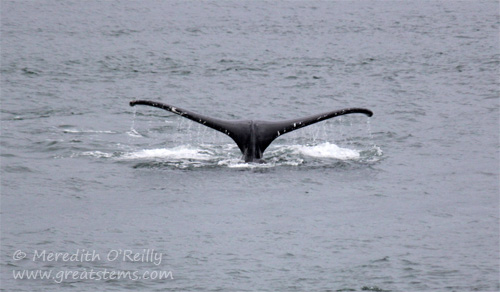
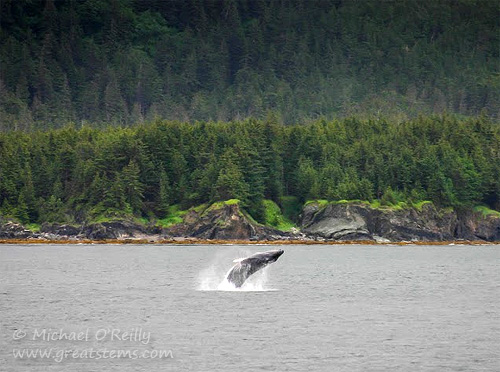 Across the bay, a solitary humpback breached several times. Oh how we wished our boat had been closer!
Across the bay, a solitary humpback breached several times. Oh how we wished our boat had been closer!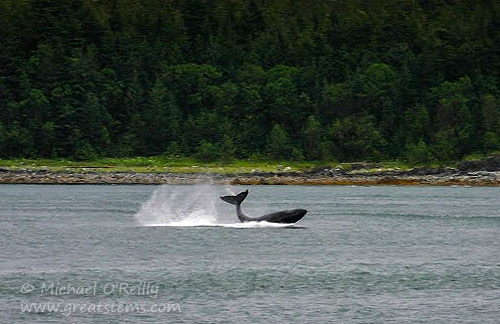 Even across the bay, the sight was thrilling.
Even across the bay, the sight was thrilling.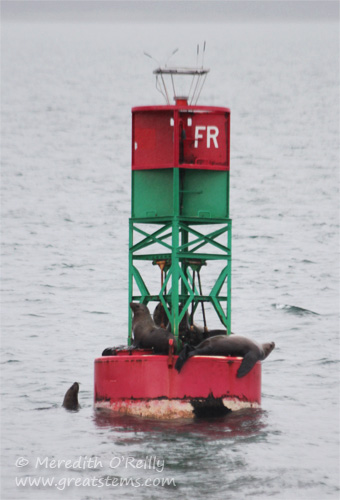
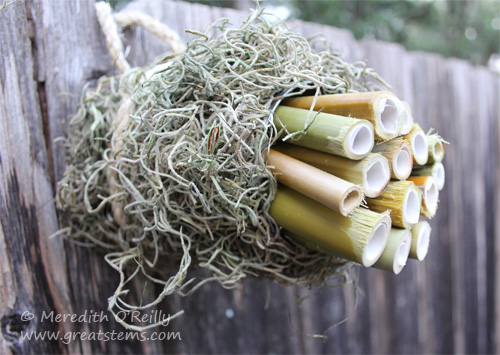
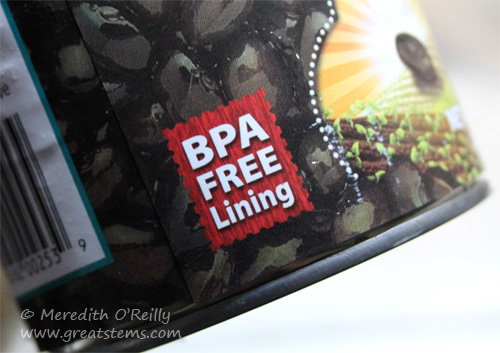
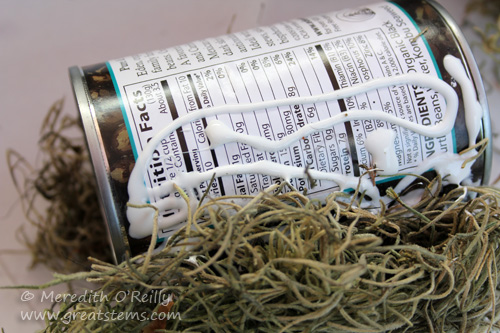
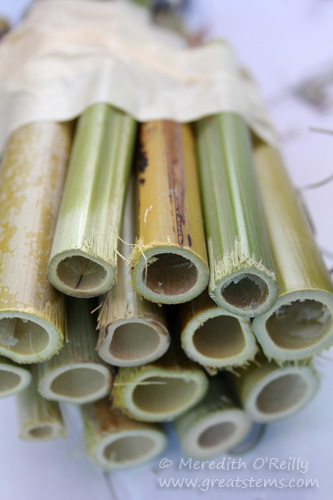
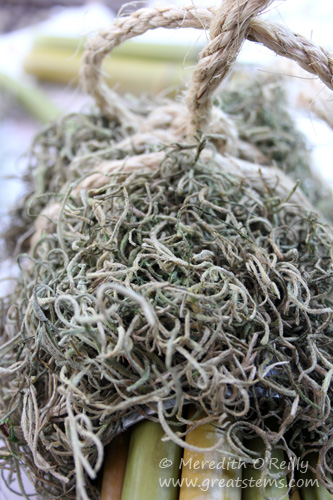
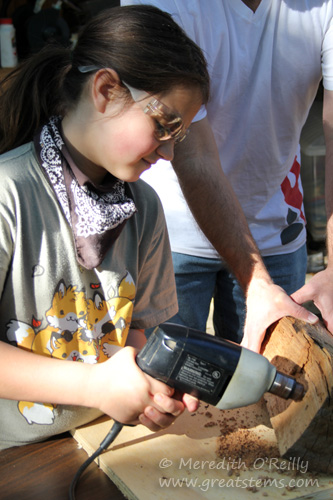
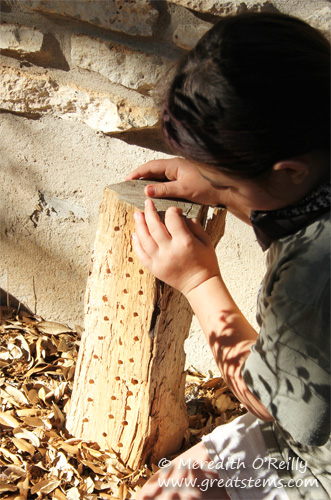
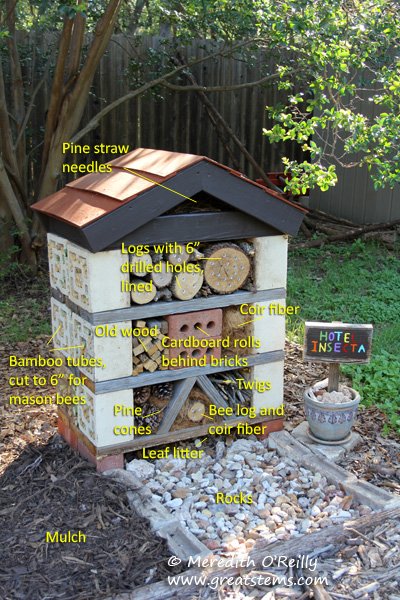
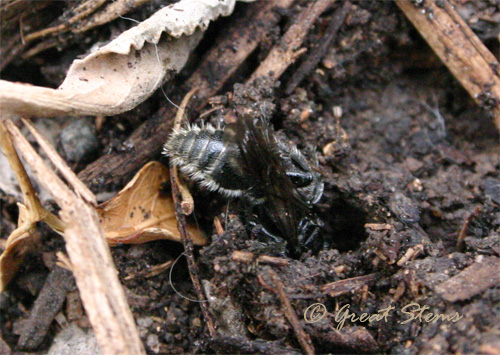 Be sure to include patches of open dirt elsewhere in your garden to let mining bees, or digger bees, lay their nests, too! Perhaps create a sign for your special “Bee Patch.”
Be sure to include patches of open dirt elsewhere in your garden to let mining bees, or digger bees, lay their nests, too! Perhaps create a sign for your special “Bee Patch.”